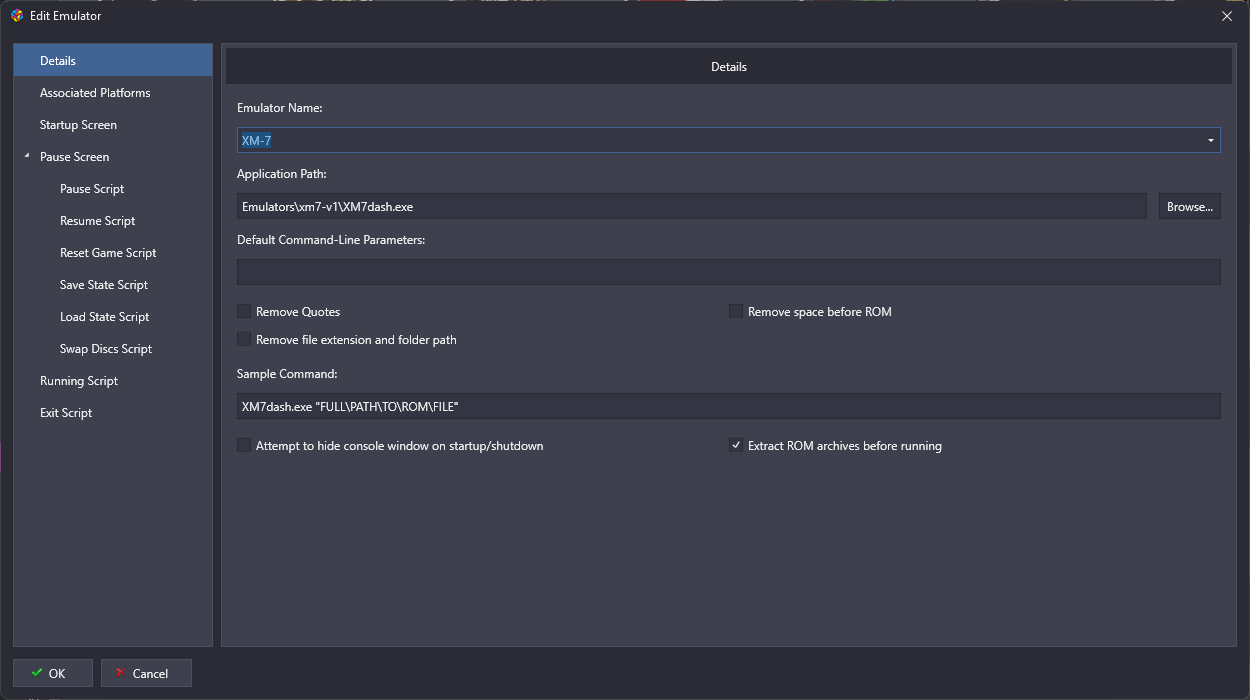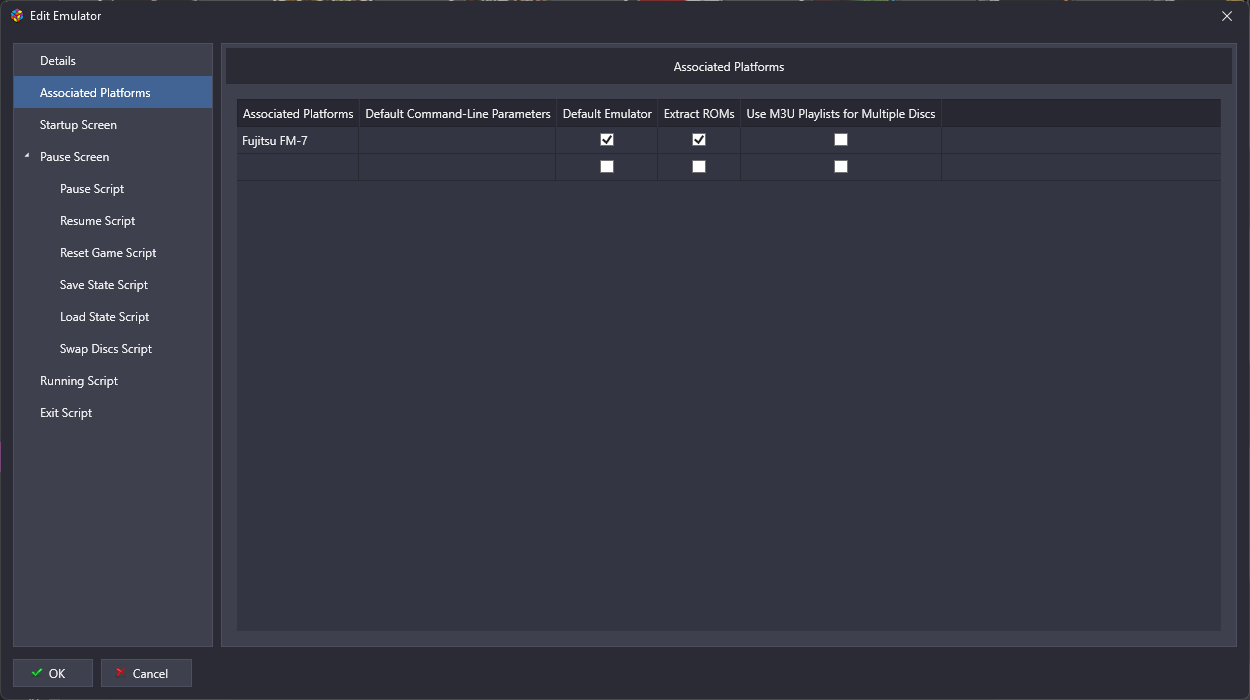Overview
Supported Platforms:
- Fujitsu FM-7
The Fujitsu FM-7 series belonged to the "trinity" of 8-bit home computers that dominated the market in 1980s Japan.
The series originally launched with the FM-8, a stodgy business/hobbyist machine that was not designed for games at all. The redesigned and cheaper FM-7 was a much greater success, and briefly became the #1 bestselling computer in Japan.
In terms of games, the FM-7 series is curious. It started out with a very game-unfriendly design, but the later FM77AV models were the most advanced 8-bit home computers in Japan.
Major models:
- FM-8 (May 1981). Dual-CPU design with expensive bubble memory. Output resolution was 640x200 (effectively 640x400 with scanlines), with 8 simultaneous colors. This became the standard 8-bit computer resolution across most systems.
- FM-7 (November 1982). Extensive redesign. Twice as fast as the FM-8 at nearly half the price. Added PSG sound and color palette functionality, making games a realistic possibility. An optional FM synthesis (YM2203) card with a joystick port later became available.
- FM-77 (1984). Built-in floppy drives.
- FM77AV (October 1985). Sleek black design. Built-in FM synthesis. Added a new graphics mode, enabling 320x200 with 4096 simultaneous colors and a form of hardware scrolling.
Media Format
Tapes
Boot into BASIC mode and simply type
LOAD
RUNGames written entirely in machine code need the loadm command.
LOADM"",,R <-- use double quotes, two commasFloppies
Most floppies run automatically, simply insert the disk and boot/reset.
Otherwise, you can use regular BASIC commands:
FILES <-- list files on disk
RUN"GameName" <-- load and run gameIf a game is labeled [req FBASIC disk], you need to boot from a system disk, such as [OS] F-BASIC v3.0 L10. Boot from the F-BASIC disk, then swap disks and run the program.
d77 Floppy File Format
The d77 floppy file format is a multi-image format, so multiple floppies can be merged into one file. These are labeled [merged] in this set. After loading a merged d77 file in an emulator, you can select each floppy disk from the drop-down menu.
XM7
XM7 files are memory dump images (basically savestates). They are convenient for quickly loading cassette tape software in the emulator XM7. But you will still need the original tapes/floppies when the game needs to load additional data.
Downloads
http://retropc.net/ryu/xm7/xm7.shtml
Controls
The directional keys are almost always numpad 4,6,2,8
Many early games used the BREAK key as an action button (maps to ESC in XM7).
In early FM-7 games, the controls may seem weird. If you press a direction, the game will keep moving in that direction even after you let go. This is because the FM-8 and the FM-7 did not support real-time keyscan, so the computer can't detect key releases, only key presses. Simultaneous key presses aren't supported either (except for the BREAK key). As a workaround, any games used the numpad 5 key as a Stop button. FM77AV games don't have this problem. On the other hand, the FM77AV had three(!) space keys, and some games use all of them, so you'll need to map the other two to something in the emulator (keys #57 and #58 on the XM7 keyboard map).
Launchbox Setup


Controls
Up::Numpad8
Down::Numpad2
Left::Numpad4
Right::Numpad6
4::F12 ; Reset
1::Enter
Escape::
Process, Close, XM7dash.exe
ExitApp